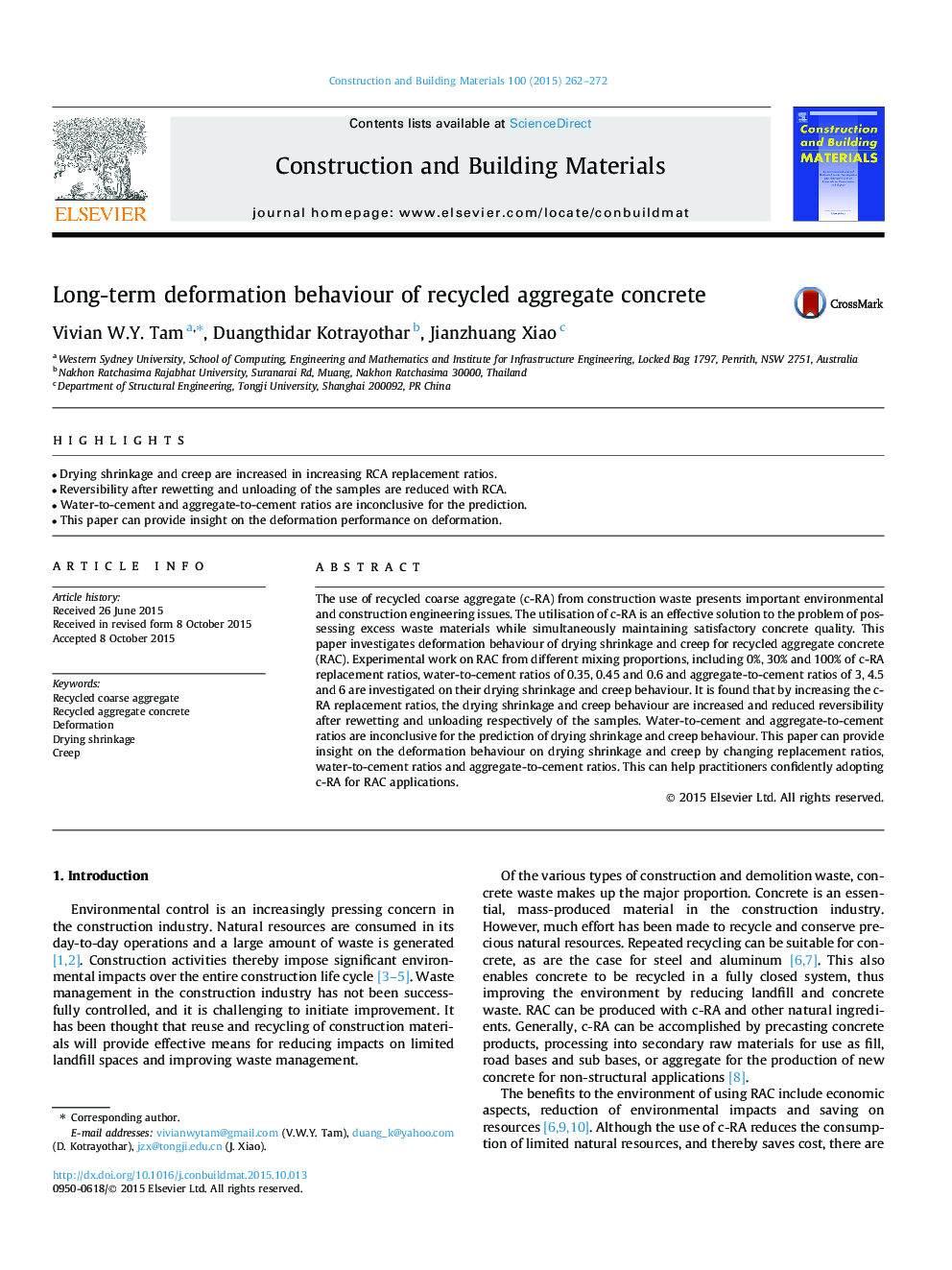| Article ID | Journal | Published Year | Pages | File Type |
|---|---|---|---|---|
| 256561 | Construction and Building Materials | 2015 | 11 Pages |
•Drying shrinkage and creep are increased in increasing RCA replacement ratios.•Reversibility after rewetting and unloading of the samples are reduced with RCA.•Water-to-cement and aggregate-to-cement ratios are inconclusive for the prediction.•This paper can provide insight on the deformation performance on deformation.
The use of recycled coarse aggregate (c-RA) from construction waste presents important environmental and construction engineering issues. The utilisation of c-RA is an effective solution to the problem of possessing excess waste materials while simultaneously maintaining satisfactory concrete quality. This paper investigates deformation behaviour of drying shrinkage and creep for recycled aggregate concrete (RAC). Experimental work on RAC from different mixing proportions, including 0%, 30% and 100% of c-RA replacement ratios, water-to-cement ratios of 0.35, 0.45 and 0.6 and aggregate-to-cement ratios of 3, 4.5 and 6 are investigated on their drying shrinkage and creep behaviour. It is found that by increasing the c-RA replacement ratios, the drying shrinkage and creep behaviour are increased and reduced reversibility after rewetting and unloading respectively of the samples. Water-to-cement and aggregate-to-cement ratios are inconclusive for the prediction of drying shrinkage and creep behaviour. This paper can provide insight on the deformation behaviour on drying shrinkage and creep by changing replacement ratios, water-to-cement ratios and aggregate-to-cement ratios. This can help practitioners confidently adopting c-RA for RAC applications.
